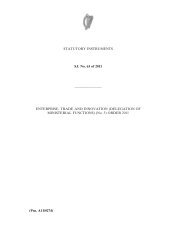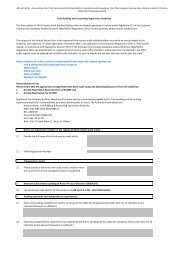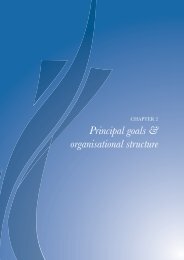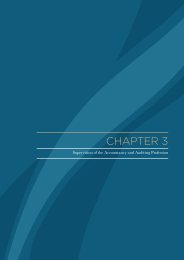View - Esma
View - Esma
View - Esma
Create successful ePaper yourself
Turn your PDF publications into a flip-book with our unique Google optimized e-Paper software.
Decision ref.EECS/0508-07: Impairment of an investmentPeriod end: 31 December 2005 /Annual Financial StatementsCategory of issue: Associates, ImpairmentStandard involved: IAS 28 – IAS 36Date of the decision: 6 November 2006Description of the issuer’s accounting treatmentAs of 31st December 2005 the issuer, by virtue of shareholder agreements, had joint control of entity A.Through its interest in A, the issuer also had a significant influence over entity B, a listed company, shares inwhich was A’s only asset.The issuer considered whether there was any impairment in respect of its investment in accordance with theprocedures prescribed in IAS 36, ‘Impairment of assets’ and which ensures that assets are not carried at abovetheir recoverable amount. IAS 36, paragraph 18, defines recoverable amount as the higher of an asset’s fairvalue less costs to sell and its value in use.The issuer argued that fair value was the only measure applicable in this case as value in use was notdeterminable as expected cash flow estimates were not evident from business plans. The issuer also arguedthat an active market did not exist for the investment in entity B, and hence, that its quoted share price wasnot an appropriate measure when considering the fair value of its significant influence on that entity.Therefore, the issuer estimated the fair value of its interest in entity B through application of measurementtechniques; one based on earnings multiples and the other on an option–pricing model.Neither estimate supported the existence of an impairment loss as of 31st December 2005.The enforcement decisionThe enforcer found that the issuer’s approach to the determination of impairment did not comply with IAS 36,Impairment of assets’ nor IAS 28, ‘Investments in Associates’’.Rationale for the enforcement decisionThe enforcer challenged the issuer’s position regarding the non-existence of an active market for aninvestment where the investor has significant influence and its method of calculating fair value.In particular, the enforcer challenged the issuer’s view that market price cannot reflect the fair value ofsignificant holdings of equity such as an investment in an associate. The enforcer pointed out that IAS 36prescribes the method of conducting the impairment test in such circumstances. IAS 36, paragraph 26stipulates:“If there is no binding sale agreement but an asset is traded in an activity market, fair value less costs to sell isthe asset’s market price less the costs of disposal. The appropriate market price is usually the current bidprice”.The enforcer also questioned compliance with IAS 28, ‘Investments in associates’. The enforcer did not agreewith the issuer’s statement regarding the non-applicability of value in use when considering impairment inthis particular case. IAS 28 paragraph 33 explains that, “In determining the value in use of the investments,an entity estimates:a. Its share of the present value of the estimated future cash flows expected to be generated by theassociate, including the cash flows from the operations of the associate and the proceeds on theultimate disposal of the investment; orb. The present value of the estimated future cash flows expected to arise from dividends to be receivedfrom the investment and from its ultimate disposal.”The standard is clear that, under appropriate assumptions, both methods give the same result.* * *- 10 -










